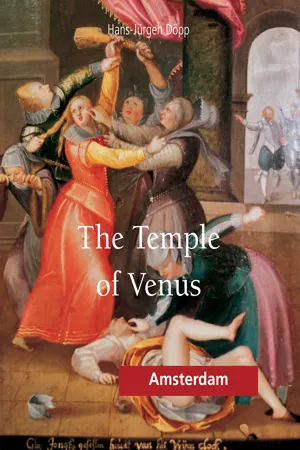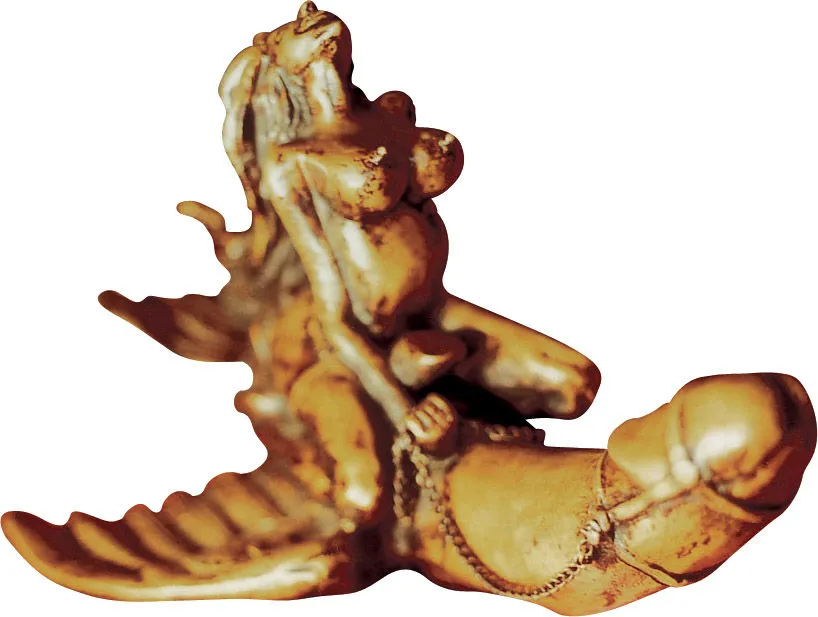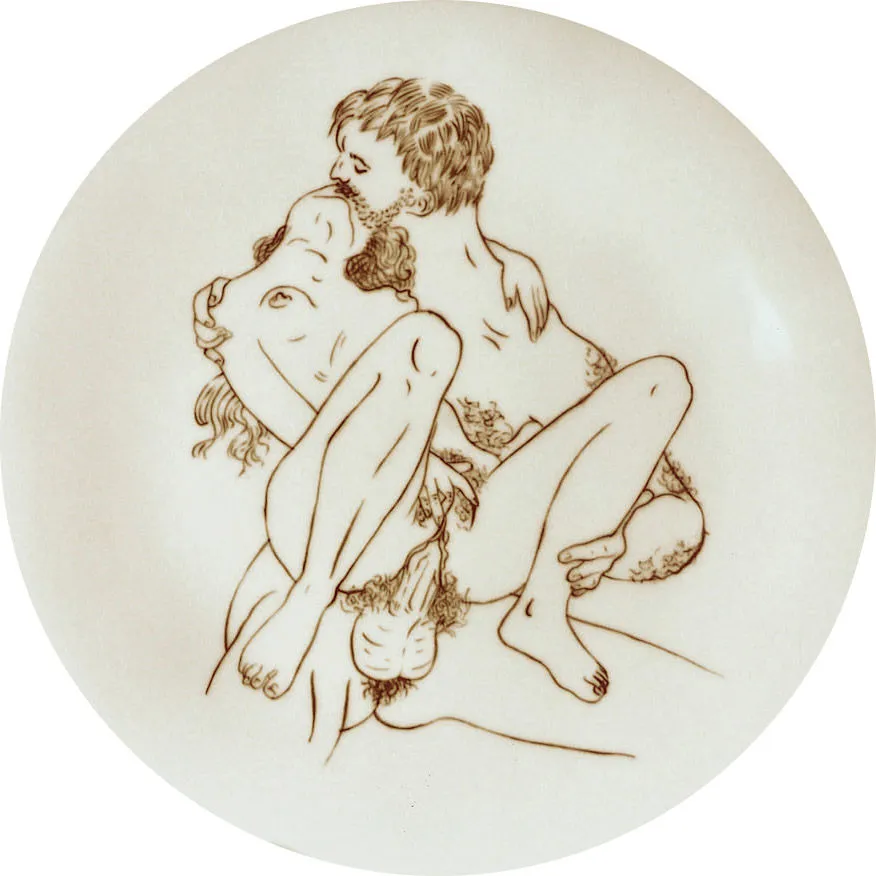![]()
Ribald Reading
The power of forbidden words – the real magic wand.
F. Schlegel, Lucinda
The subject of this essay is not how the erotic is depicted in literature and art but the use of words in a specific language to suggest the erotic.
The connoisseur and collector of erotic art is well aware that literary and visual depictions very often result in turning an erotic book into something that has its own libidinous properties – into a sexual object that evokes lust or sustains it. In this sense, might the genitalia themselves be nothing more than the executive organs of literary imagination?
Citing and quoting erotic books in erotic art and literature is partly a gesture of self-consciousness. While entertaining the intellect, it is also “name-dropping” – showing the author’s wide knowledge, but also acknowledging the worth of previous works. Illustrations in such a book allow for the expression of unrestrained imaginations. And the fact that they are illustrations, specifically referred or referring to the text, ensures that the reader perceives it all as a duality – the printed page of text and the printed image – so that it can never be forgotten that erotic literature is first and foremost literature and not an immediate portrayal of reality.
8. Veneration of the phallus. Terracotta. Modern.
9. Woman riding a winged phallus. Bronze. Modern, from an antique design.
10. Phallic phial with ebony stopper. 19th century.
During the last [the 19th] century, especially, the sexually explicit and the erotic were removed from the open view of formal society. They were relegated to where imagination was allowed to roam freely, exiled to the less available field of erotic literature and art. Anybody researching the history of literature and art and scouring the archives of museums and libraries will discover how precarious an aesthetic existence such exiled spheres implied. If these literary asylum-seekers could expect no public response, it is hardly surprising that they did at least develop a subterranean communications network with one another. Just as potatoes propagate through the subterraneous tuber, erotic literature seems to propagate through quoting and citing other erotic works. It thus comprises its own excellent reference system within the scope of a closed society.
Books are usually regarded as symbols of cultural development. Their underlying power to undermine culture, however, is not apparent until made evident in an erotic book. What has been banned from public view may then be seen in a sublime form to entice and call for revolt against the bane of the civilization process: corporeal desire. And of course such desire finds expression also in pictorial images. But with pictures, although sensuality may be more immediate, it remains at an unbridgeable distance because of the depicting medium. The image, after all, solicits the most abstract of all sense organs – the eye. Smell and sound are senses for close proximity; the eye, on the other hand, is a remote sense. The gap between the requirements of cultural development and the primary desires of the physical body can be bridged only in a voyeuristic way. For an image to refer to the text, or for an erotic text to quote from another erotic text, reinforces that apparent hiatus between body and intellect. What was shut away from the public gaze and kept hidden following human society’s intellectual decision to adopt a language- and book-oriented culture can now only return in a form of literature and art regarded as “under-the-counter” and libertine. Western thought shies away from bodily connotations. Intellectual pursuits demand the control and suppression of physical urges. The body is virtually unmentionable. Yet now “libertine” literature has become available, the erotic is no longer banned from intellectual understanding. Books may now openly talk about the processes and needs of the body. Words may once again become the magic wand of desire.
To the intellectual, a book represents the body in a verbal form. “Libertine” literature uses the intellect as a medium to emphasize the opposite. Words and sentences are used to reveal the body and its desires, to lay bare and unclothed all its physical needs and propensities.
Still, however, words and sentences can only present a form of reality and not the reality itself. Words can only be words. And that is why the wide scope of “libertine” literature has as its aim the depiction in words of what is essentially indescribable. In contrast to the utter reality of the real world, the vocabulary of the physical body employed by “libertine” literature remains inevitably that of the imagination.
11. Plaque by Casarotti. Bronze. Around 1910.
12. Plaque by Casarotti. Bronze. Around 1910.
13. Porcelain plate decorated by Mario Tauzin. Around 1930.
14. Porcelain plate decorated by Mario Tauzin. Around 1930.
Once-banned corporeality has indeed regained a position for its depictions of bodily urges in literature, then – but it does not break free of the unreality of literary fiction. Literature is not a substitute for action: it is an arena for virtual action.
The subject of this book – effectively a “book about books in books” – is to some extent the equally esoteric overlap of book-collecting (involving the private collection of rare texts) and the collecting of erotic works. The book focuses on select erotic texts of the 18th to the 20th centuries. These are texts that have their own significance within an erotic context, and the book thus constitutes either a mode of defense – as in the motif of The Temptation of St Anthony, which leads to the reappearance of what has been rejected – or a direct vehicle into the imaginary world that is the erotic.
The sections of quotations within this book – arranged chronologically – feature many excerpts from works of erotic literature in which other erotic works are cited. They comprise a colorful medl...







